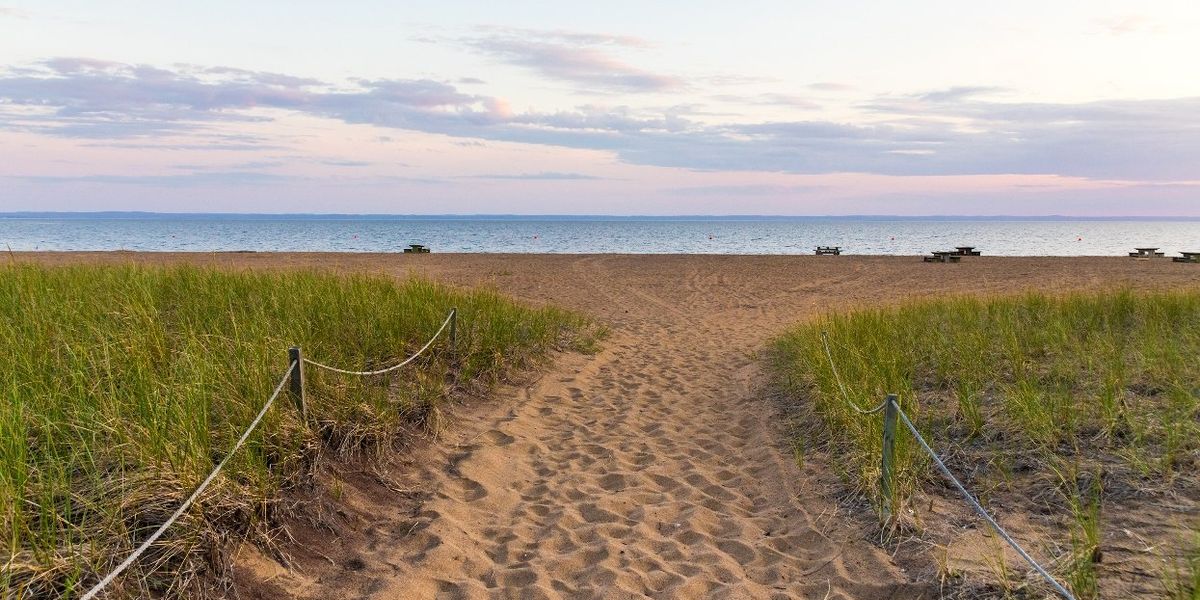From the red cliffs of Îles de la Madeleine to the sandy shores of Gaspé, Quebec is home to some incredible beaches. But while most people pack towels and swimsuits for a day on the water, others opt for a different kind of freedom: going completely nude.
It’s a lifestyle choice that might sound bold, but for some Quebecers, it’s second nature. And speaking of nature, a lot of folks willing to bare it all call themselves “naturists”.
According to the Fédération québécoise de naturisme (FQN), “Naturism is a practice that consists of living naked in harmony with nature and others, in a respectful and family-oriented environment.” Often confused with nudism, it’s about more than just taking your clothes off. The FQN defines it as promoting “mental and physical relaxation” and “a more holistic view of living in harmony with nature.”
With that in mind, there aren’t many spots within the province where naturists can shed their extra layers in public.
Where are Quebec’s nude beaches?
Officially? Nowhere. Quebec still doesn’t have any government-designated nude beaches. But that hasn’t stopped naturists from building community at long-recognized, unofficial spots.
When MTL Blog last spoke with the FQN in 2023, six beaches were identified as naturist-friendly. As of this summer, that list is down to five. Jean-François Lapointe, administrator and former president of the FQN, confirmed that one affiliated centre has since closed.
Still, these five remain active and well-known in Quebec’s naturist scene:
- Plage d’Oka (Okapulco)
- Plage du Parc de la Pointe-Taillon
- Plage de Boom Défense
- Plage de Cap-aux-Oies
- Plage du Lac Simon
They aren’t officially sanctioned, but they’ve earned reputations over time. At Oka, for example, park authorities installed a sign in 2023 identifying the beach’s naturist area.
Is public nudity legal in Canada?
Canada doesn’t actually ban public nudity outright. Section 174 of the Criminal Code makes exceptions for people with a legitimate excuse, like swimming, sunbathing, or simply enjoying nature in peace.
Lapointe also pointed to a 1977 legal precedent that still holds weight. The judge’s ruling at the time stated that “It cannot be an offence to swim in the nude at a lonely place in Canada in summer. That is part of the pleasure of summer in Canada.”
Of course, discretion matters. These unofficial naturist beaches generally operate on mutual understanding: if you’re there, you’re expected to respect the space and the people in it.
Is naturism getting more popular in Quebec?
While public naturist beaches still draw crowds, Lapointe says many younger Quebecers seem to be choosing more intimate spaces to go “au naturel.”
“Now we have thousands of small private naturist ‘centres’ in backyards — only for friends,” said Lapointe. “Young people tend to gather at home with friends rather than in large centres with strangers.”
Interest in naturism and nudism may be growing, though. According to a Federation of Canadian Naturists (FCN) survey from 2014 (the most recent data available), 14% of Quebecers had already tried naturism, and nearly half said they’d be open to it. Meanwhile, 1-in-4 (25%) Canadians said they were open to the idea of going to a nude beach.
Curious about trying it?
Lapointe says everyone should give it a shot at least once, not just for the thrill, but for the freedom.
“Everyone deserves to live in respect and without judgment,” he told us. “Everyone is beautiful in their body and should accept themselves as they are.”
For those curious but unsure, the FQN suggests starting with their guide for newcomers. It covers basic etiquette (like bringing a towel to sit on) and tips for making the experience comfortable for everyone.
For more info, you can check out the FQN’s full list of naturist beaches and centres right here.
And if you’re comfortable keeping your private parts private, that’s cool too.
This article’s cover image was used for illustrative purposes only.


![12th Jun: About Antoine (2023), 2 Seasons [TV-MA] – New Episodes (6/10)](https://occ-0-8465-999.1.nflxso.net/dnm/api/v6/Qs00mKCpRvrkl3HZAN5KwEL1kpE/AAAABaFE4OAg41KEgV45TeTglAxPJANmZ0W6-7GjJtjEcMG4ZpupLcjGTAY8nrti75WRn1n9JU0wsP05-m6KOGZCDlwWEzXrEEpcqacC5HU9pHnBYprupGWjtFH72nwVrF9RhdYdwtmnPn8ETxQnYf04IltG4OUg2VblN3awO-xH.jpg?r=eaa)



![12th Jun: The Fairly OddParents: A New Wish (2025), 2 Seasons [TV-Y7] – New Episodes (6.5/10)](https://occ-0-8465-999.1.nflxso.net/dnm/api/v6/Qs00mKCpRvrkl3HZAN5KwEL1kpE/AAAABcLajEPQFiTMVcVVhzbYOjMaug2irOXQFhhLT5rLIlmRY_lx0ZeLjLze-XThI7L5TZluvaRsFbHaEyLIwkZCVk5VBNivUJJSI9ovkalR-48_FaPNbjWWIdJ7GIEa5pVEyWvEI_v08kKTe-vCUQjJjJSHSU4sNnMZI-wWruAyzKTFk6MhBA2L0vgosOnKzPv9IJUH.jpg?r=055)





